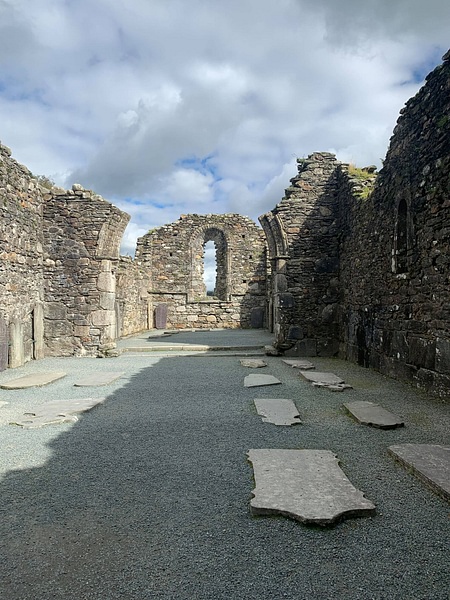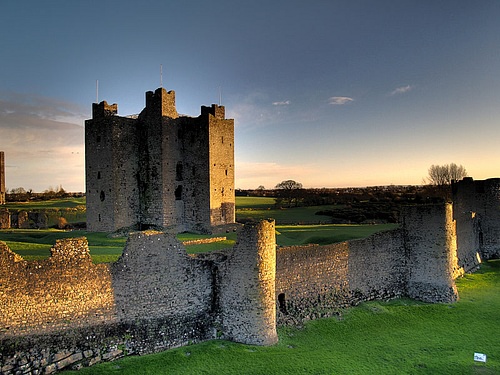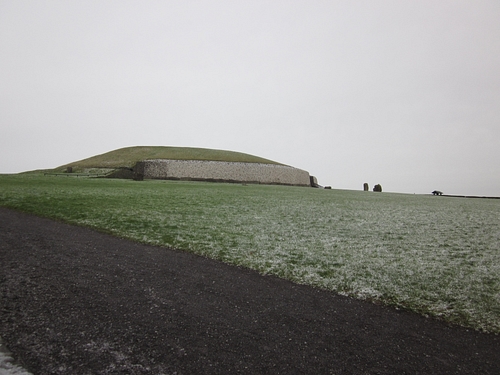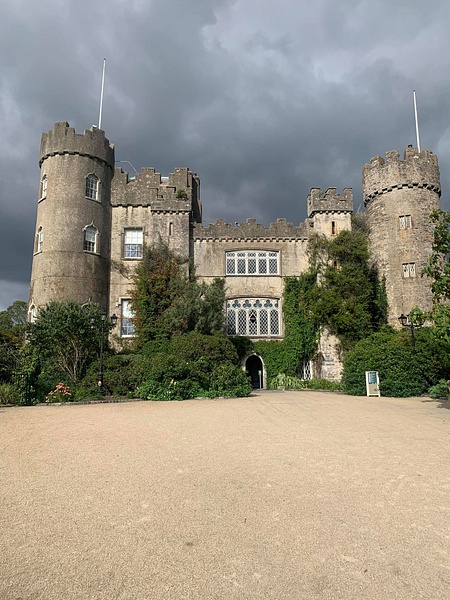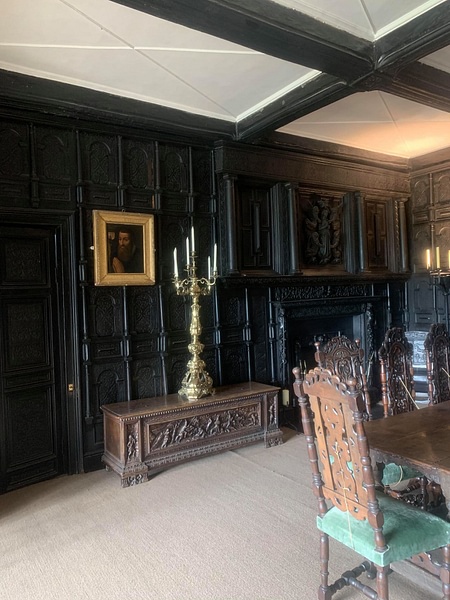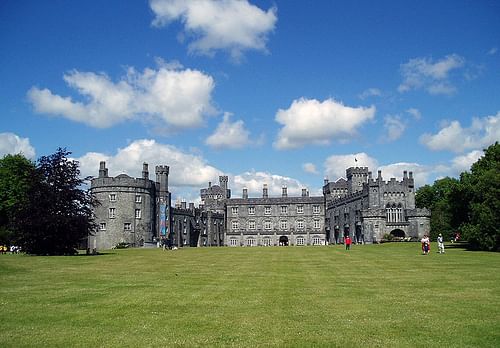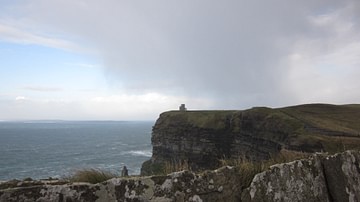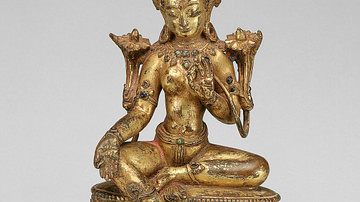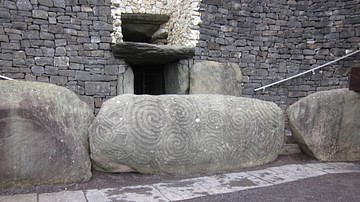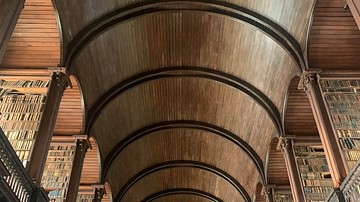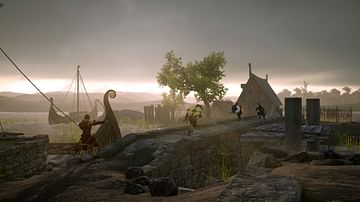Ireland is filled with historical sites and monuments. The 'Emerald Isle' always has something new in store for those who venture there and are eager to learn about its fascinating past. Many sites have a mystical past told through legends of gods, goddesses, and supernatural beings, and the sites often became sacred to Christian converts and saints. You can spend weeks exploring the country, but if you are visiting the capital, Dublin, there are many sites to visit on a day trip.
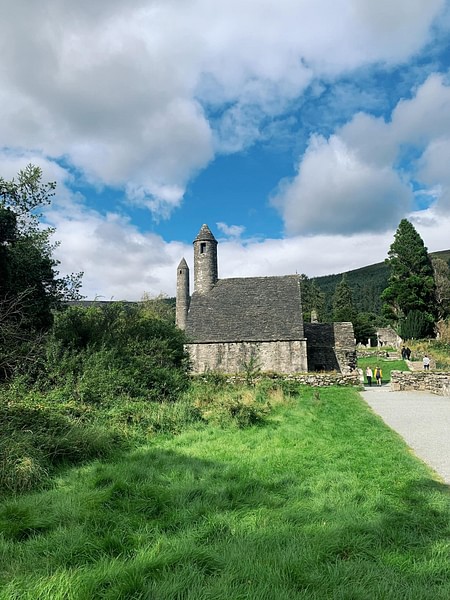
Kildare
Kildare is one of Ireland’s oldest towns, founded by Saint Brigid (c. 451 - c. 525 CE). According to legend, Brigid was raised by a druid and converted to Christianity while bringing the wisdom of the old ways into her practice. She adopted or was given the name of the Celtic goddess Brigid/Bride/Brigit of fertility, healing, poetry, and smithcraft and inherited many of her attributes. Her feast day on February 1st is also known as Imbolc or Brigid's Day.
Brigid arrived in 480 CE at the site now known as Kildare with her nuns and founded an abbey and monastery. The site was called Druim Criaig (oak-covered ridge), and the town became known as Cill Dara (cell or church of the Oak). Legend says that the King of Leinster granted her land after he told her that she would get as much land as her cloak could cover. When Brigid lay down her cloak, it covered all of Currag (a large flat open plain around Kildare).
The Christian community founded by Brigid flourished. It had one abbey for monks and one for nuns, with the abbess being the highest ranked. In the monastery, Brigid's flame was kept alive for centuries by dedicated nuns. Kildare became an important monastic site and town and grew wealthy. Its wealth attracted the Norse Vikings, who established several trading ports on the island. The first Viking attack on Kildare occurred in 835 CE, and 14 more followed.
However, the town continued to be an important pilgrimage site until the Reformation and the many bloody wars of the 17th century CE. After that, the cult of Saint Brigid lost much of its importance, and so did Kildare. Today, Kildare is a small town with a lovely village center and has gained popularity as a tourist destination among Christian and pagan followers of Brigid.
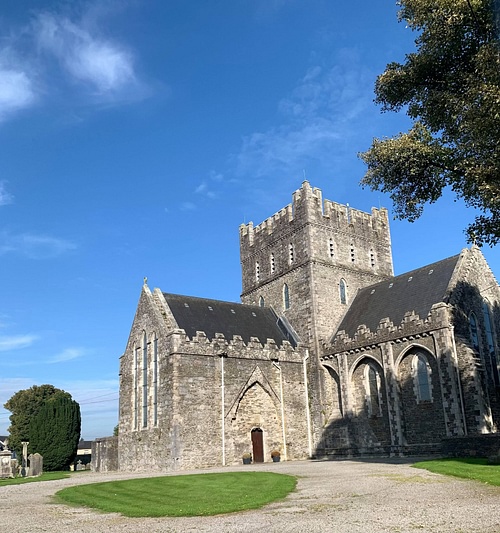
Kildare is an easy day trip from Dublin, with the train from Heuston Station in Dublin taking about 30-40 minutes. There is a short walk from the train station to the town center, where it is recommended to start the exploration by visiting the town’s heritage center, located in the middle of the town square. The heritage center provides useful information and also offers a newly developed virtual reality experience called 'Legends of Kildare.' The visitor will hear the stories of the Fianna (warrior bands), Brigid the goddess, Saint Brigid, and the inhabitants who lived during the time of the Vikings and Normans.
One should visit St. Brigid’s Cathedral, built between 1223-1230 CE over Brigid’s monastic site. Ireland’s highest accessible round tower is also on the grounds. These round towers were bell towers that summoned monks and nuns to prayer at early Irish monasteries, and they date from the 12th century CE. You can also visit the restored foundation of an ancient fire temple. On Saint Brigid’s Feast day, a fire is lit in the temple to keep the tradition of Brigid’s fire alive.
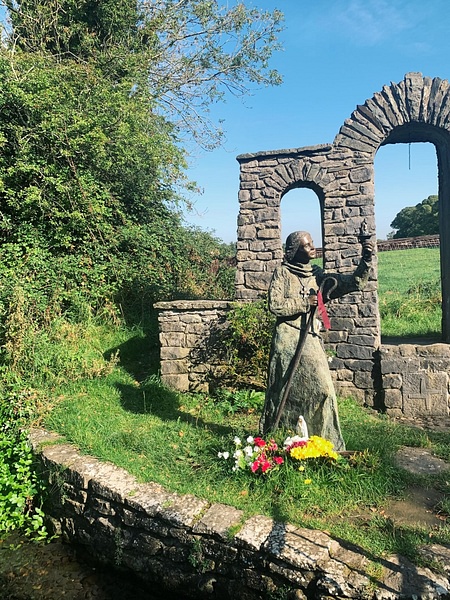
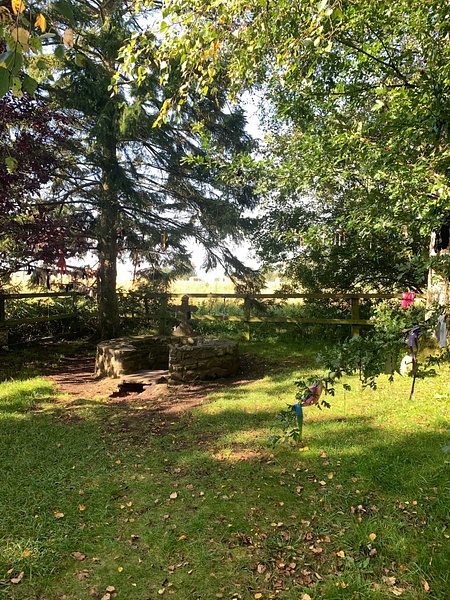
Saint Brigid’s Well is a 15-minute walk from the town center. The well is a sacred site, still important to the local community and people who travel there from all over the country and the world. It is believed to be the drinking well used by Brigid and her white cow. People come here to pray to the saint and/or the goddess and ask for protection and healing. In the trees around the well, people hang scarves or cloths as offerings and symbols of Saint Brigid’s cloak. The well is a beautiful place to spend time in silence and connect with the long history of Kildare and the legacy of Saint Brigid. Make sure to eat at one of the many cozy restaurants and cafes in the town center and get to know some of the locals who have fascinating tales to tell about their town’s history.
Glendalough
Glendalough is one of Ireland’s most famous ancient monasteries, and with good reason. The monastery and natural surroundings have attracted pilgrims and visitors for decades. Located in County Wicklow, south of Dublin, the site is reachable by a drive of just over an hour or by public bus. The monastic site and the two lakes – or loughs - are truly magical and scenic and will stay with you long after you have visited.
The old monastery at Glendalough was founded by Saint Kevin (c. 498-618 CE) during the 6th century CE and flourished until the 17th century CE, despite plundering by foreign invaders. Little is known about Kevin and his life except that he founded Glendalough and was the monastery’s first abbot after seeking sanctuary at Glendalough. He is said to have lived in a partially human-made cave, now known as St Kevin’s Bed, located by the upper lake. According to legend, Kevin was deeply connected to nature and the environment. During his seven years living there, he was accompanied by many different animals, who became his friends.
To enter the monastic site, you go through an ancient double gateway, which would have been the symbolic portal between the monks and their surrounding world. Walk the monastery's grounds and study the old tombstones scattered around the landscape, including some of the beautiful Celtic crosses. Wrap your arms around St. Kevin’s cross because local legends say if you can circle it, you will be granted a wish that will come true.
One of the first structures you will encounter is the ruins of the site’s cathedral - one of the largest remaining ancient churches in the country. Part of the structure dates back to the 10th century CE. This church was originally dedicated to Saint Paul and Saint Peter but was converted into a cathedral during the 13th century CE. Close by is an iconic round tower, which is visible from far away. If you go for a hike around the lakes it is good to look for the tower to orient your location.
After exploring the grounds, it is time to go for a walk along the lakes. On your way, you will pass St. Kevin’s church, one of the many churches on the site and one of the best-preserved. The lakes and their surroundings are a popular outdoor destination for locals and tourists, and the beautiful scenery makes you understand why the saint chose this place for establishing a monastery and living a quiet life of service and dedication.
Boyne Valley
The Boyne Valley is the area around the river Boyne, believed to have been created by Celtic goddess Boann. It is located in County Meath, north of Dublin. The region is filled with sites and monuments from Ireland's ancient history.
One of the most famous sites in Ireland and symbolic of the sovereignty of the ancient High King of Ireland is the Hill of Tara. The Hill of Tara is one of the ancient sites in the Boyne Valley, which was used from the Neolithic age for burials and religious rituals. For centuries, the Hill of Tara was the site of the inauguration of the High King of Ireland and the political center of the island, as well as being an important spiritual site pre-Christianity.
Tara was also important during the Christianization of the island, as Saint Patrick (according to legend) went there in the 5th century CE to ask the High King's permission to spread the new religion's teachings. Later, however, Tara lost some of its status, especially after the Normans' invasion and the English colonization of Ireland when the tradition of the High King was suppressed. Explore the Neolithic passage tomb known as the "Mound of the Hostages", several burial mounds, round enclosures, and the “Stone of Destiny” (standing stone). The Stone of Destiny was the coronation stone, which was said to choose the High King by making sounds of joy when the next rightful king put his feet on the stone.
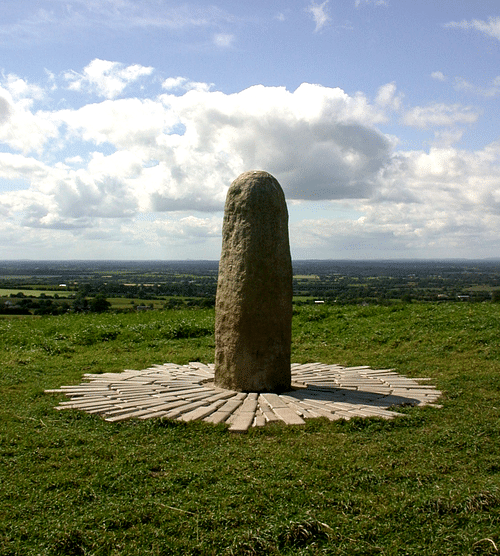
Trim Castle is one of the most iconic Norman castles in Ireland, located next to the River Boyne. The castle was built in 1172 CE by baron Hugh de Lacy (c. 1135-1186 CE), who was granted the Kingdom of Meath by King Henry II of England (1133-1189 CE). This was shortly after the Anglo-Norman invasion of Ireland when new forts and castles were built to secure foreign rule and a power balance between the English King and his barons, who were granted rule over the Irish Kingdoms. Previously a ringfort and a wooden castle, the stone castle still standing today dates from c. 1220 CE. On your Boyne Valley trip, make sure to visit the monumental castle with its many fascinating stories to tell.
Newgrange, the ancient passage tomb, is considered by many to be the national monument of Ireland. The Neolithic structure was constructed c. 3200 BCE and was of significant importance for different sermons and spiritual practices, as well as being a burial site. Especially important is the monument’s connection to the winter solstice on 21 December 21, when the rising sun enters and illuminates the inner passage.
According to myths and Irish legend, Newgrange was built by the Tuatha de Danaan (children of the goddess Dana). In reality, it was the native pre-Celtic population who constructed it. Newgrange’s importance diminished around the 3rd century BCE as the memory of who constructed the mound and what it was used for faded.
Today, Newgrange is a UNESCO world heritage site. Two more Neolithic burial mounds - Knowth and Dowth located in the Brú na Bóinne World Heritage Site - are worth visiting, too.
Malahide Castle
Malahide is a coastal town north of Dublin city center known for its stunning castle and garden. Malahide is reachable by the DART (rapid transport system), and several bus routes from the center. An excursion can be undertaken in a couple of hours, but it is recommended to spend more time here. Malahide Castle was the ancestral home of the Talbot family for centuries, and parts of the building date to the 12th century CE. Richard Talbot (c. 1122-1174 CE), an English knight who helped King Henry II of England invade Ireland, built the first castle. It was rebuilt and extended many times until the last family member left the castle in 1975 CE.
Malahide is now a museum with open park areas. The cost to enter the grounds is free, but for the castle, you need to pre-order tickets for a guided tour. It is also necessary to buy a ticket to visit the botanical garden. The guided tour will take you through the medieval castle, starting in the oldest room - the oak room with beautifully carved oak panels dating from the 16th century CE.
There are many stories about knights, battles, and kings who have visited the castle, the most famous being the breakfast in the Great Hall before the Battle of the Boyne. The extended Talbot family ate together in the Great Hall on the morning of July 1st, 1690 CE, but 14 members out of 15 members never returned from battle. A famous painting of the battle can be seen when visiting the hall at the end of the guided tour. There are several ghost stories, so be sure to watch out for the Lady in White who is said to roam the castle. After visiting the castle, explore the grounds and the park, which is perfect for a picnic lunch. Be sure to spend some time walking through the picturesque coastal town and beautiful Malahide Beach before returning to Dublin.
Kilkenny
Kilkenny, like Kildare, is a town in itself and worth a longer stay, but if your time is limited, it is only 1.5 hours drive south of Dublin. The trip can be combined with Glendalough on the way back. In Kilkenny, two sites should be a priority.
The first is St. Canice’s Cathedral and Round Tower, constructed c. 800 years ago. The monastic activity on the site is believed to have been established in the 6th century CE by Saint Canice. The religious site laid the foundation for the medieval city that grew up around it. The cathedral is the second-oldest medieval cathedral in Ireland and is one of only two that have survived on the island. The iconic round tower, located next to the cathedral, is a thousand years old, dating from the sacred Christian site before the construction of the current cathedral built by the Normans, who arrived in the 12th century CE. Still standing tall, the tower is the oldest structure in the town. There are many curiosities to explore in this ancient cathedral, including a 'green man', a traditional pagan deity from the Celtic tradition.
The second must-see is Kilkenny Castle, one of the most famous of the Anglo-Norman castles in Ireland. Anyone wanting to learn more about Kilkenny’s history and transformation through the last eight centuries should visit. The Norman invaders constructed the first castle, which was most likely built in wood in 1195 CE. The owner was Richard de Clare (1130-1176 CE), 2nd Earl of Pembroke, more commonly known as Strongbow. Much of the stone castle still standing dates from the 13th century CE. The castle is strategically located next to the River Nore and was the home of the powerful Butler family, whose members were earls, marquesses, and dukes of Ormond.
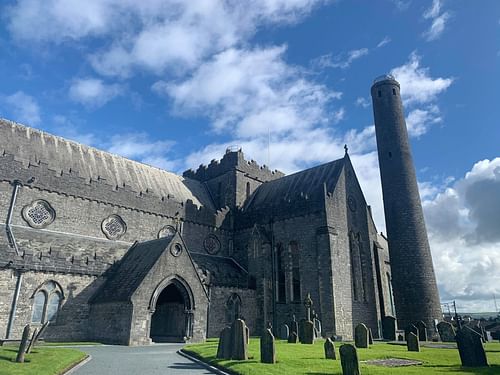
There have been many extensions and restorations of the castle and the park over the years. There is much to explore, including the picture gallery in the east wing of the castle hosting the Butler family’s fine art collection. Parts of the castle were also damaged during the Cromwellian attack on the castle in March 1650 CE. Archeologists are currently excavating the remains of the removed gatehouse. For anyone wanting to enter the castle and explore its many rooms preserved from the Victorian remodeling, it is necessary to book a ticket.
In Kilkenny, you can learn about the town’s most famous citizen - Alice Kyteler, an alleged witch. Living in the 13th-14th century CE, Kyteler, a powerful woman with her own fortune and pub, was viewed upon with suspicion by the townsfolk due to the untimely death of four of her husbands. The accused witch was held captive in the dungeons of Kilkenny Castle during Kilkenny's sorcery trials. Luckily, she managed to escape and disappears from history, but her faithful servant Petronilla de Meath (c. 1300–1324 CE) was burned at the stake in 1324 CE. The feared witch’s pub, Kyteler's Inn, is still running and is a must-visit for anyone wanting to experience Irish pub culture with a witchy twist.


